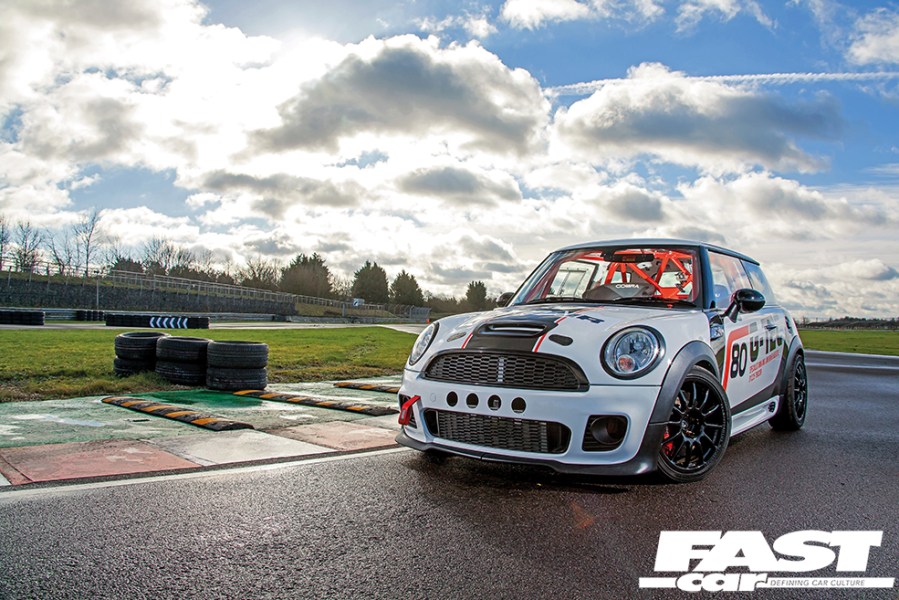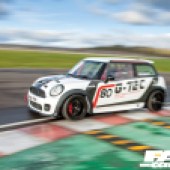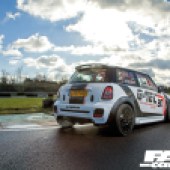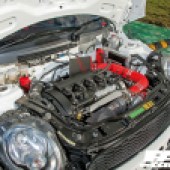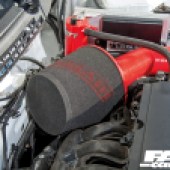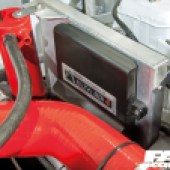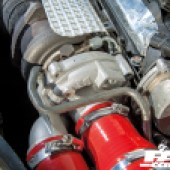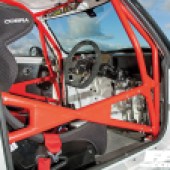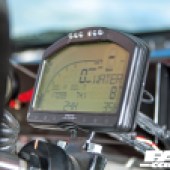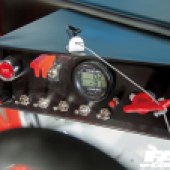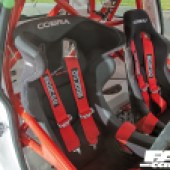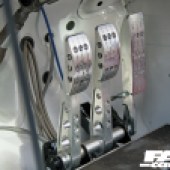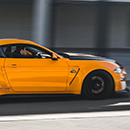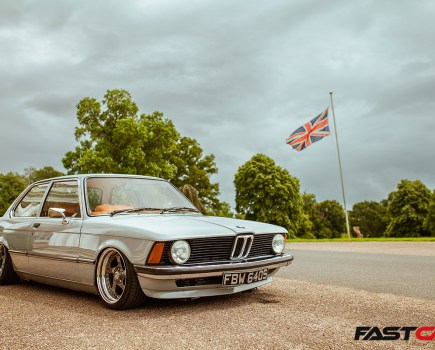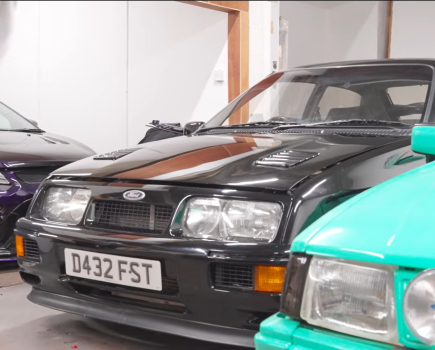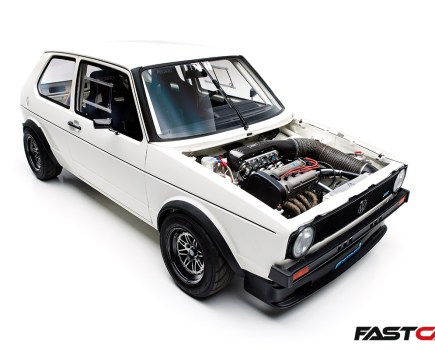Two and-a-half years ago, this was a stock R56 Cooper S road car. Now it’s an R56 MINI race car ready for competition.
Most people who are into cars have at some stage wondered what it would be like to be a racing driver. For the vast majority of us, that’s where it stays – an idle day dream to while away a boring Monday afternoon at work. However, for a few driven individuals, the call of the race track is strong and they commit to making the dream a reality.
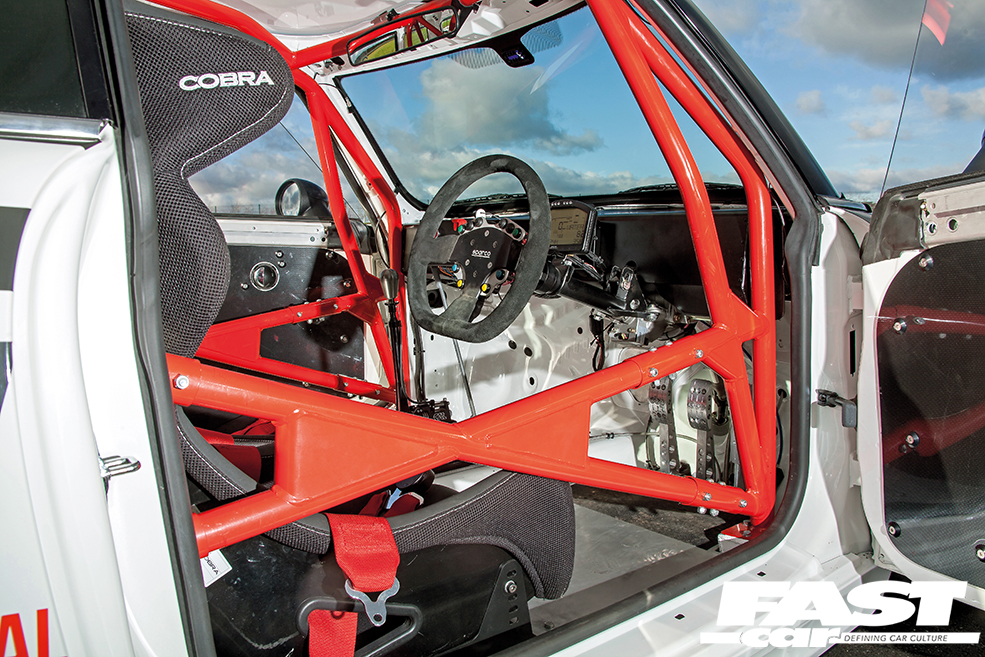
One of them is Wiltshire-based Graham Puckett. Having originally set out to build a fun track car, he decided that he really wanted to race and took the next steps to prepare his MINI for competition. It’s a journey that’s taken two and-a-half years with plenty of challenges along the way, but as he readily admits, “I’ve enjoyed every minute of it.” Completely self-taught, Graham has done as much of the work himself as he can, helped along the way by some well-respected tuning and motorsport specialists. We caught up with him at his local circuit, Castle Combe, where he showed us around the freshly completed race car.
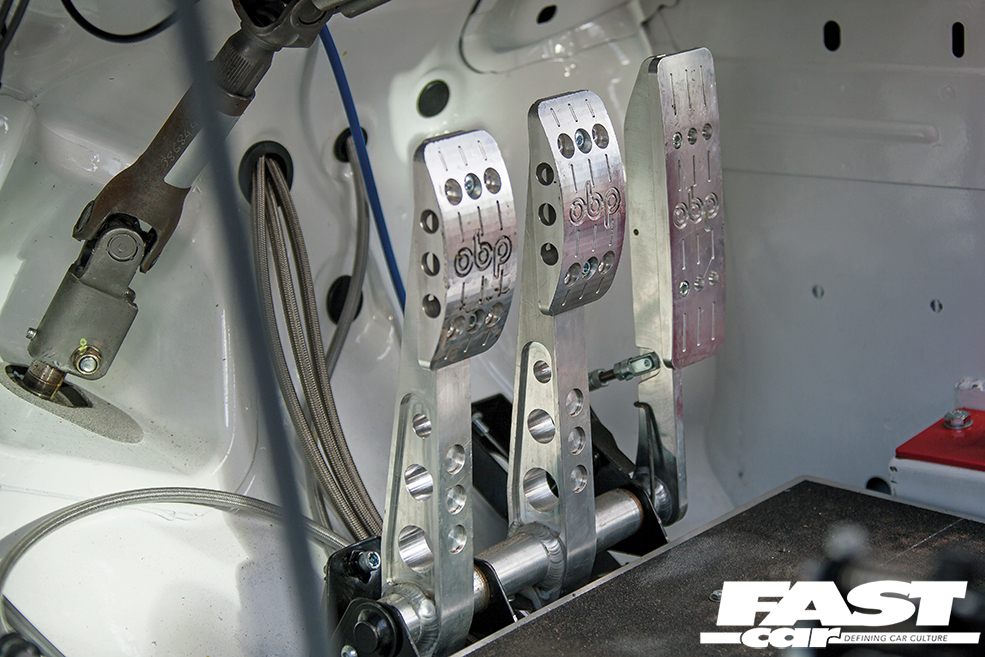
“I bought it as a stock Cooper S with the JCW bodykit already fitted, and the original plan was to turn it into a track car.” With close ties to the local MINI enthusiast community thanks to daughter Georgia who works for Ramair, and wife Andrea (both proud owners of modded MINIs) having one to play around with on track really appealed. And, to begin with, that was the goal.
The first job was to pull it apart in readiness for some track-focused mods. “I removed everything and took it back to a bare ’shell,” comments Graham. The seats, interior trim and carpets were pulled out and safely stored away to be sold on. Then things got more involved. The sound deadening was ripped out, then the seat brackets were removed – basically anything that wasn’t necessary was cut off or binned in a bid to save weight.
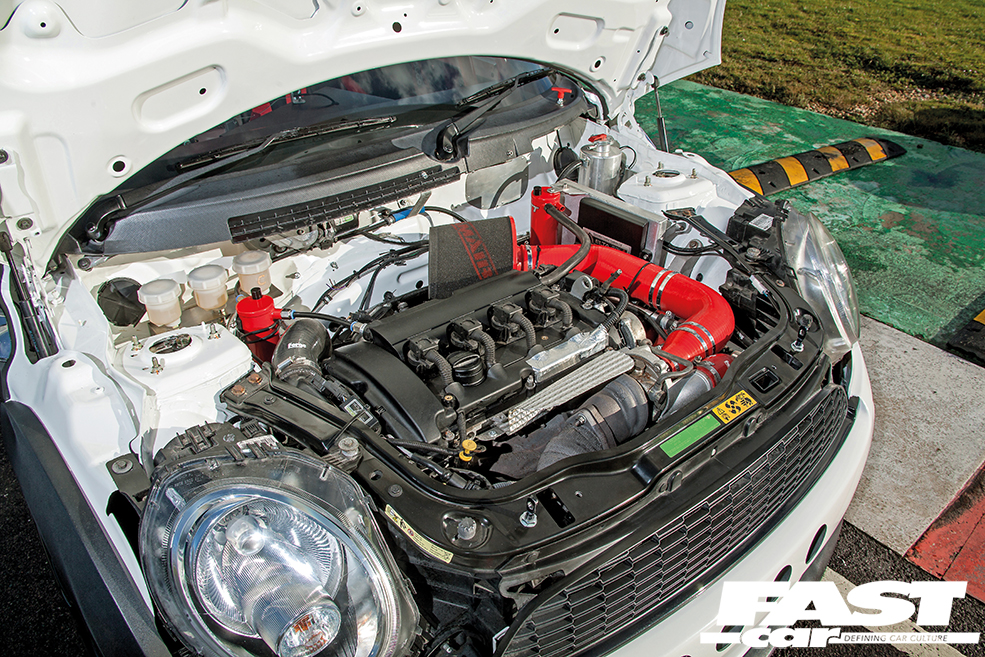
At this stage, the goal was to create something that would be fun on track and as we all know, less weight equals a more nimble car. However, as he got more into the build, Graham began to see other potential for the R56 Cooper S.
“At this stage I’d not even done a track day,” admits Graham. “I’ve done lots of karting and had my own kart, but nothing competitive.” But the more he thought about it the more it made sense to go past a simple track car and build a competition car to enter the Castle Combe Saloon Car Championship. Having seen the cars in action and enjoyed the friendly atmosphere of race meetings, he decided that was what he would aim for. And so, the evolution of the MINI from track day funster to full on racer began in earnest.
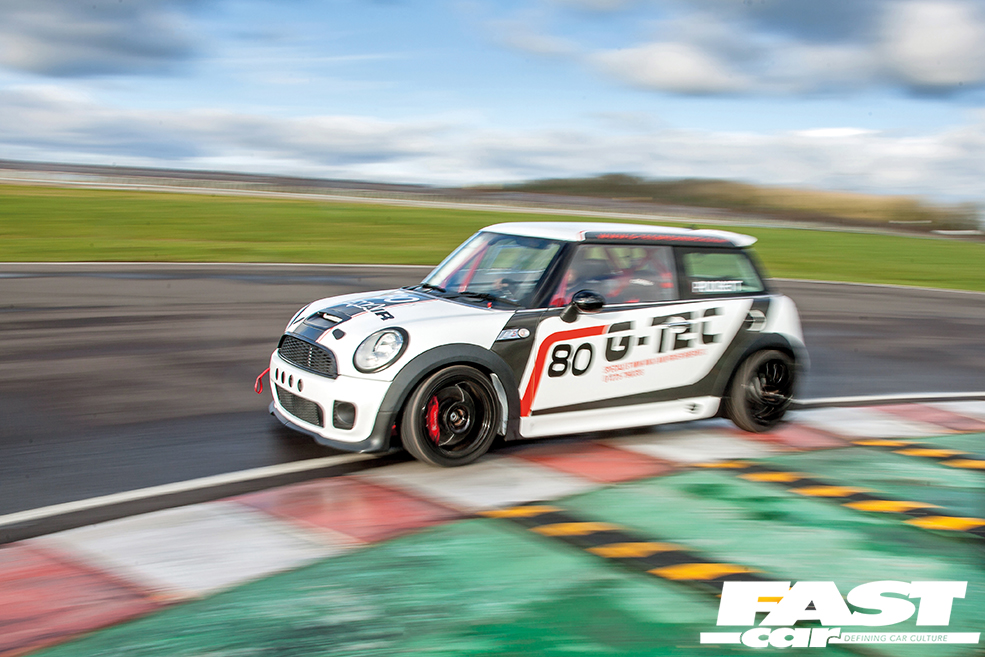
A lot of the work already carried out would stand Graham in good stead for the rigours of a full race season, but there were still bits that would need specialists attention. And now of course, everything had to meet strict motorsport regulations. This included seats that were in date, a fully plumbed-in fire suppression system, an external kill switch and a comprehensive FIA-approved roll cage.
“I wanted to do as much of it as I could, so I took care of all the bodyshell work, stripping it back, welding bits up and painting it,” says Graham. “I work next to Pro Alloys and boss Neil gave me some pointers on the paint and welding, but I really enjoyed doing it and bar a few little bits that needed redoing, I’m really pleased with how it all went, considering I’d never attempted anything like this before.” While the car was being worked on, Graham spoke to Frank Anderson about the engine build. The race regulations stipulate that the original engine must be used, but that it can be modified, so a plan was hatched for a stronger, more potent 1.6T. “I considered building it myself, but with it being used hard in races, I didn’t want to risk it going pop, because I’d made an error with something,” says Graham. So Frank Anderson took care of machining the block and working on the liners and pistons.
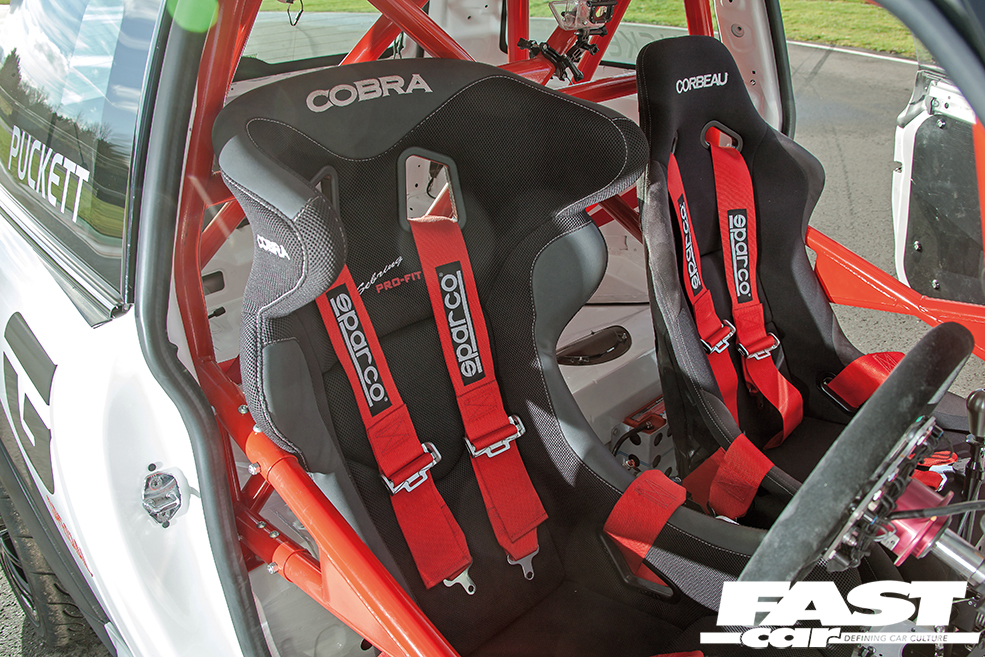
Then a friend who works for MX Zone took care of the head work, before the engine was sent off to JC Performance to be built and installed in the MINI. The N14 lump has been fitted with forged rods and pistons, along with King race bearings and ARP bolts. With a strong engine sorted, the next step was to create some more boost. The JCW turbo was sent off to forced induction experts AET Motorsport, who set about hybridising it. With a custom turbo-back exhaust system, built by another local contact of Graham’s, Dan Trout at Norris Designs, the boosted 1.6 was ready to be mapped.”I’ve used Ray West Tuning for all of my road car mapping, so I went straight to him with this one,” says Graham. Once it had all been set up, via the SCS Delta ECU, the MINI made 307bhp – not bad for a car weighing in at just 1040 kgs. “The limiting factor is the size of the turbo so that’s something to look at in the future,” says Graham. “Ideally I hope to get 380-400bhp, which should be fun.”
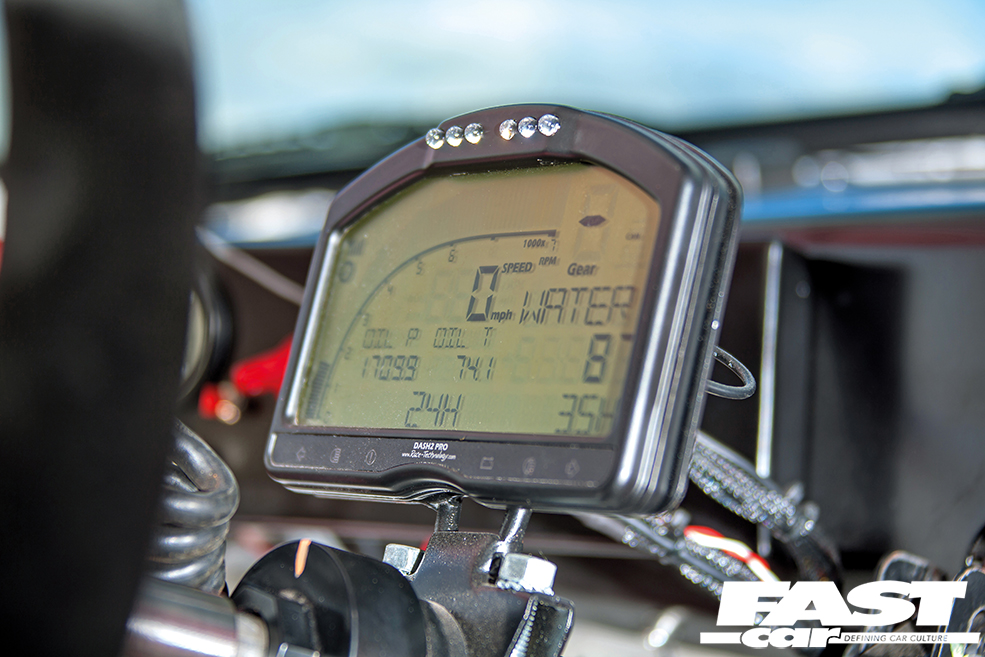
Although a lot of weight has been removed from the car, there’s still room to shed a few more kilos. ”I reckon there’s another 30-40 kgs I can save.” While the car was with Ray West, filtration specialists Ramair sent one of their development team down to work on a bespoke air intake system. “The guys worked out the most efficient place to fit the pipework and the filter, and I can’t thank them enough, says Graham.
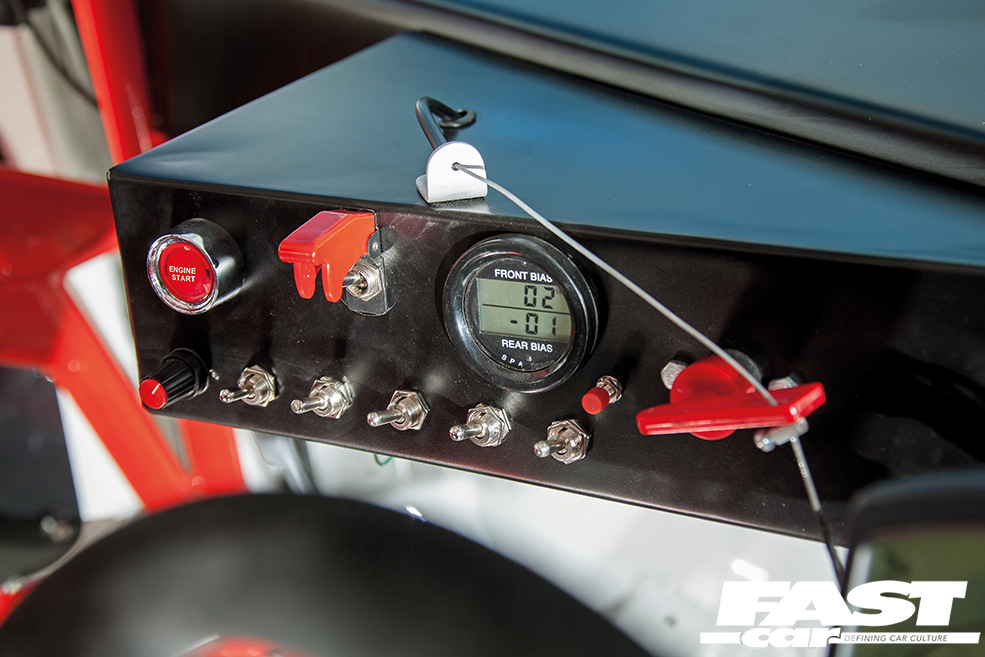
When it came to the chassis, the mods were limited. “We can fit coilovers and ARBs, but we can’t do any work with adjustable tie rods ends etc.” Even so, a lot could still be done to improve the handling and turn in of the MINI and BC Racing delivered a set of coilovers with bespoke valve and spring rates suited to Castle Combe. “The car corners really flat; a guy called Josh Harvey set the geometry up and he couldn’t believe how easy it is to drive,” says Graham.
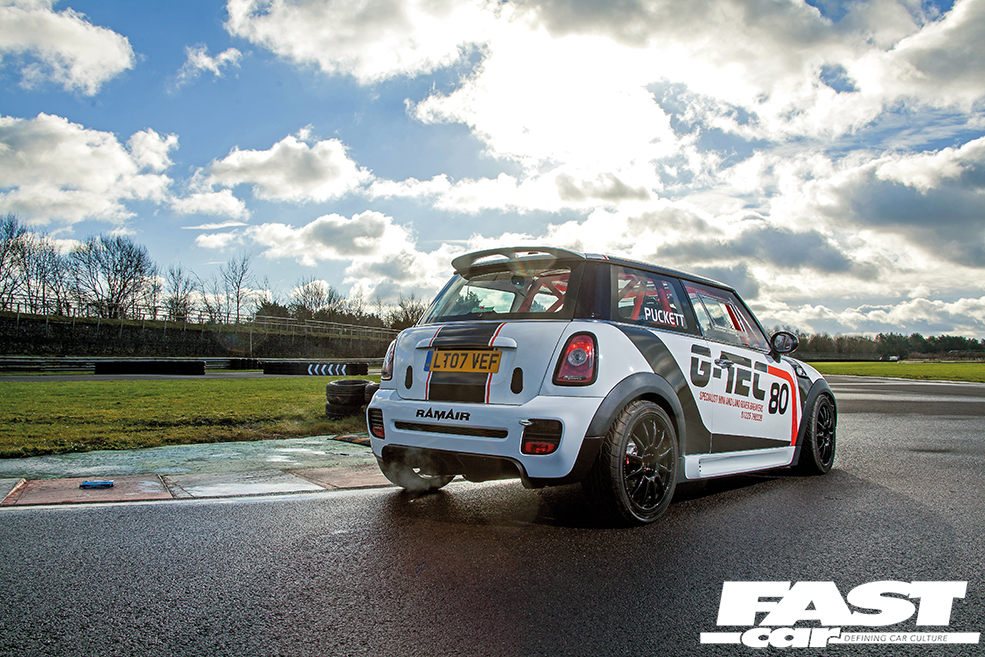
With the car finally completed, the next step is to take it on track to see what it can do. “The first round of the Castle Combe Saloon Car Championship is at the end of April,” says Graham. It will be the first time racing for both him and the car at the fast and testing Wiltshire circuit. “I’ll be racing with some really powerful cars in the same class, but there are a few other MINIs, so I’ll be going against them rather than the big boys – the main thing is to go and have some fun.” Having spent many hours in the workshop now comes the exciting bit – time to race!
Tech Spec: R56 MINI Race Car
Engine:
1.6-litre turbo N14, forged pistons and rods, King race main and big end bearings, ARP stud conversion, ARP uprated rod bolts, bottom end lightened and balanced, ported and flowed cylinder head, JCW hybrid turbo, custom downpipe and exhaust, SCS Delta stand-alone ECU, GTT crank case breathers (x 2), Airtec intercooler, Samco hoses, OBP header tank, custom Ramair induction kit
Power:
307bhp
Transmission:
Custom twin-plate clutch with lightened and balanced flywheel, Quaife diff
Suspension:
BC Racing inverted coilovers with custom springs and valving, Eibach anti roll bars front and rear, Powerflex black series polybushes all round
Brakes:
K-Sport 8-pot front brake calipers and discs
Wheels & Tyres:
Team Dynamics Pro-Race wheels and Yokohama AD08 tyres (slicks for race)
Interior:
FIA-spec roll cage, fully stripped with all trim and sound deadening removed, OBP pedal box and brake bias adjuster, CAE gear lever, custom wiring loom, custom dash, Race Dash 2 display and data logger, Cobra driver’s seat, Corbeau passenger, Sparco harnesses, Sparco steering wheel Samco harness
Exterior:
Mini GP rear diffuser, Perspex driver and passenger windows, G-Tec livery
Feature taken from Performance Mini. Words and Photos: Davy Lewis.

